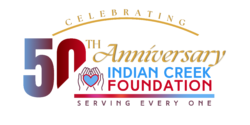The evolution of respectful language that places primary identification on a person rather than a particular description has developed through very intentional efforts in advocacy and public policy. Person first language applies to many circumstances, but it is especially vital in the context of disabilities.
For most of recent history, expedient language was the most acceptable way to describe a person. By placing an adjective in front of a noun, we can use fewer words in a sentence. But when it comes to describing people, dignity should trump efficiency. We are all people – individuals with many characteristics – who should be accepted as such prior to any specific descriptors.
Examples of Person First Language
Person first language has gained prominence in common use, and has even been legislatively required in some cases, during the 21st Century. Many people who became adults prior to the year 2000 might not be accustomed to this more acceptable phrasing, but it is generally the standard among young adults.
The opposite of person first language is identity first language. Identity is somewhat of a misnomer, as it most often singles out only one characteristic. One of the main reasons for using person first language is to place the description word in a secondary spot because it should not encompass that person’s entire identity.
A few examples of identity first language, followed by the preferable person first language are below:
- The paralyzed boy vs. the boy with paraplegia
- The cancer patient vs. the woman with cancer
- The mentally disabled man vs. the man with intellectual or developmental disabilities
- The Type 2 diabetic vs. the man with Type 2 diabetes
While it absolutely takes more words to describe someone using person first language, this order of wording signifies the individuality of the person ahead of their description or diagnosis.
Respect an Individual’s Own Preferences
Person first language is necessary in official language and when referring to others. The exception to using person first language is to defer to an individual’s expressed preferences. In many cases, people do feel as though it is necessary to use their description first, and their choices should be respected.
Individuals who use identity first language when referring to themselves, or maybe what they consider to be their ingroup, have specific reasons for doing so. In some cases, they feel that the identifier is a key part of their human experience and should be named prominently. Some individuals feel as though the descriptor provides important information to people they are interacting with, especially in any kind of medical or professional setting. Still others wish to identify with an exclusive community who share this description.
The Deaf community tends to prefer identity first language, as does the blind community. Autism is one community in which there is currently a great deal of debate about whether to use person first or identity first language. Indian Creek Foundation follows these topics closely so that we can keep our staff and stakeholders up to date.
When talking to an individual who prefers to use identity first language, it is completely acceptable to follow their cues. No one should get into the habit of correcting anyone who describes themselves in a certain way, or taking their description as permission to describe all others with similar characteristics in the same way.
Though this may seem confusing at first, the best approach is to always use person first language. When applicable, adapt to match a specific individual’s preferences in that context. Always revert to person first language following that interaction.
All Words Have Power
Indian Creek Foundation believes in respecting every individual for their own unique characteristics and qualities. Person first language, or the language our participants prefer, comes naturally among our staff and volunteers because we always focus on serving our community with the highest level of dignity and respect. For more information about advocacy and supporting members of the community with disabilities, please contact us at 267-203-1500 ext. 102.
